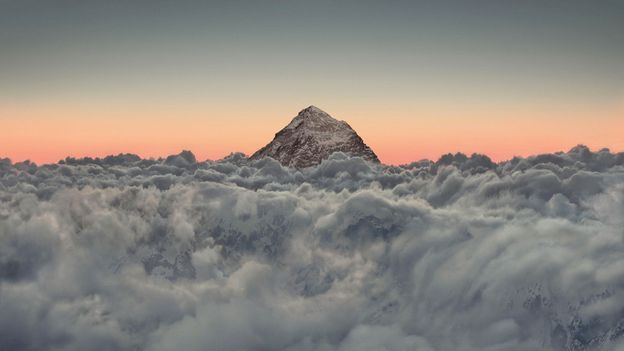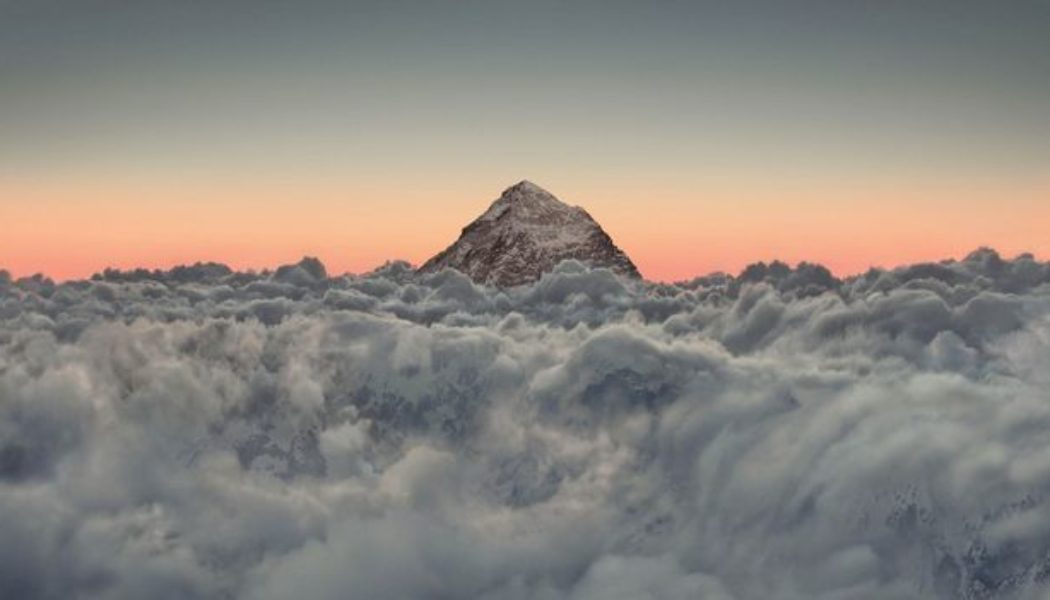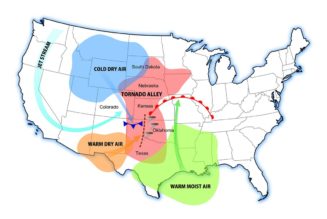
But let’s say scientists started their measurements from the core of the planet instead. Everest would no longer be considered the tallest mountain on Earth. The mountain that measures the greatest distance from the centre of Earth to its peak is Chimbarozo, in Equador at 10,920m (35,826ft). What about starting from the seabed? The accolade of tallest mountain would then go to Mauna Kea, a volcano in Hawaii that arches 10,000m (32,808ft) from the ocean floor.
Looking beyond our own planet, we can see examples of just how enormous mountains can become. Olympus Mons, a volcano on Mars, towers 21km (19.2 miles) into the sky and stretches 624km (388 miles) wide. It is roughly the size of the state of Arizona. Because gravity on Mars is weaker than on Earth, and because Mars doesn’t have tectonic plates shifting and colliding beneath the surface, the ooze of lava that flowed out of the Martian volcano in the planet’s past was able to grow to monstrous proportions.
Could Everest become a similar giant? In the 1980s, a researcher at the Cavendish Laboratory in Cambridge, UK, attempted to estimate what such a limit might be on Earth, taking into account the strength of gravity and the strength of the rock underlying the mountain. The calculations, which made “no presensions to serious geophysics” estimated the theoretical maximum height of a mountain range with a granite base – as Mount Everest largely has – to be 45km (28 miles) on Earth.
But there are a number of barriers – apart from our planet’s relentless weather – that might stand in the way of this, according to Headley. For starters, “you would eventually run out of your tectonic forces, and then it would stop growing”, she says. Scientists believe that eventually the Earth’s mantle will cool to such a degree that the planet-wide dance of plate tectonics will end. Until then, earthquakes and landslides will also erode away the mountain too.
“At some point, [the mountain] becomes so steep that it’s unstable and chunks start falling off,” Elmore says.
With the wind, snow and ice buffeting, cracking and splitting the rock, Everest is unlikely to ever reach the sizes seen on Mars. “We have our weather systems, and weather is really good at creating erosional forces,” Headley says. “Basically, the fact that we have water, whether in the form of ice or snow, or just rain, is what really can limit mountain growth.”
For now, Everest keeps edging, bit by bit, into the sky as other forces try to tear it down. Elmore’s 2019 team discovered global warming was yet another of these, driving considerable thinning of the snow and ice on the upper reaches of the mountain in recent decades and revealing more bare rock to the erosive impacts of weather.
Join Our Telegram Group : Salvation & Prosperity






![Pope John Paul II’s Soviet spy [WSJ paywall]…](https://salvationprosperity.net/wp-content/uploads/2020/05/pope-john-paul-iis-soviet-spy-wsj-paywall-327x219.jpg)

